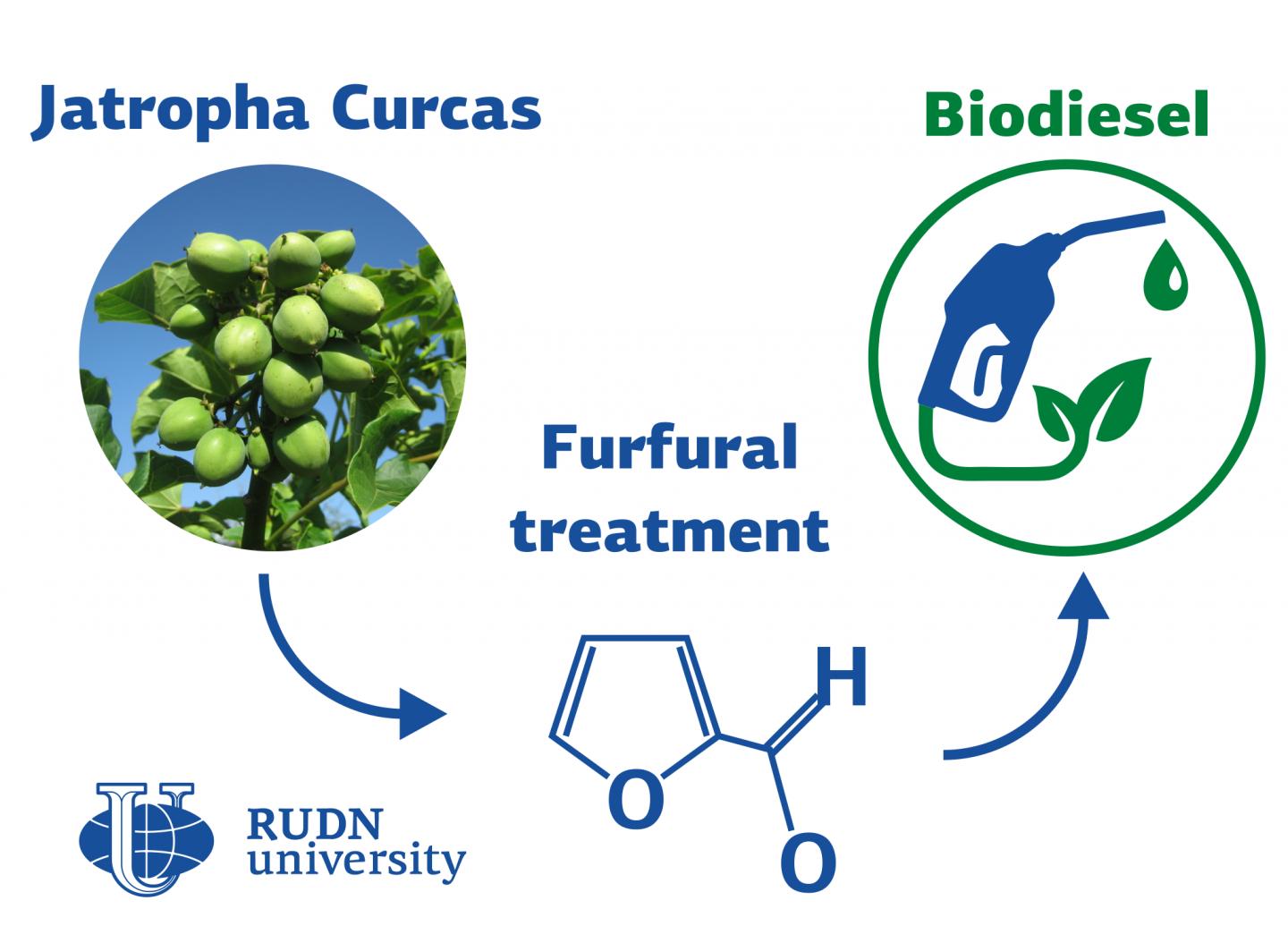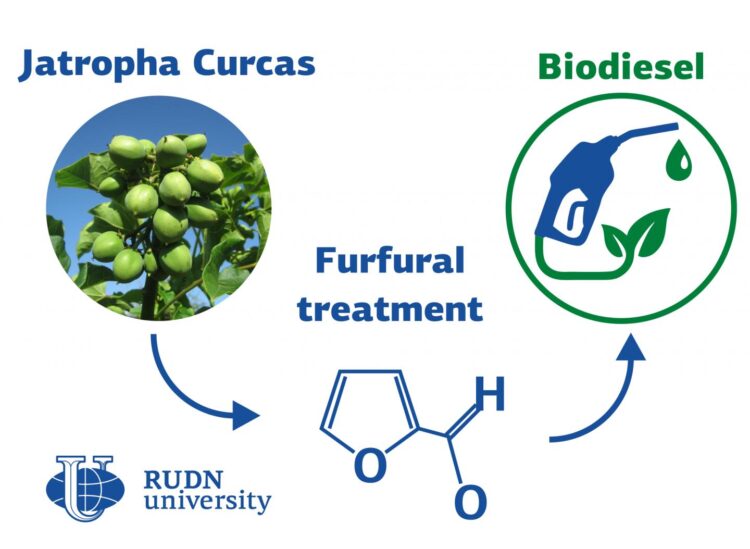
Credit: RUDN University
RUDN University chemists have proposed a new method of producing fuel from Jatropha Curcas, a poisonous tropical plant. Natural minerals and a non-toxic additive from vegetable raw materials are used for that. The reaction efficiency is 85%. The fuel can be used in diesel internal combustion engines. The results are published in the International Journal of Green Energy.
Jatropha Curcas is a common plant in many tropical regions. Its seeds contain lots of oil, but they cannot be used agriculture because the oil contains toxins that are dangerous for people and animals. But the composition of jatropha oil is suitable for the manufacture of biodiesel. One of challenge of the processing the plant raw materials is to select sufficiently effective and safe catalysts. RUDN University chemists found a suitable catalyst and selected the optimal additive-a substance that improves the useful properties of the fuel.
“Mineral catalysts with a complex chemical composition, for example, zeolites — calcium and sodium silicates, have performed well in biodiesel production from vegetable and animal fats. They are quite active, eco-friendly and can be reused. But biodiesel, like hydrocarbons, cannot be used without improving additives”, Ezeldin Osman, PhD student at RUDN University.
RUDN University chemists decided to use furfural as an additive for diesel biodiesel. It is obtained from plant waste, such as sawdust or straw, it improves the characteristics of diesel fuel, in particular, its cetane number is an indicator of flammability.
As a first step, the researchers obtained biodiesel from Jatropha Curcas oil. To do this, they mixed the oil with three times as much methanol and added a catalyst — minerals from the zeolite group, mainly thomsonite. The catalyst amount was 5 times lower than the oil. RUDN University chemists also tested other reaction settings, but the highest yield of biodiesels (up to 85% in the composition of the reaction products) was obtained at this ratio of reagents and a temperature of 75°C.
The main part of the experiment was the selection of the optimal amount of furfural to improve the characteristics of biodiesel. RUDN University chemists mixed biodiesel and the additive in equal quantities, in other variants they used twice as much additive as fuel, and vice versa. It turned out that the highest cetane number (64.1) is in fuel containing 66.6% of furfural. This is 4.3 units higher than that of biodiesels without furfural. In this ratio, the additive removes all compounds that impair flammability from the biodiesel, such as alcohols and carbonyl compounds. The achieved characteristics of biodiesel from jatropha kurkas allow it to be used in internal combustion engines in the future.
“The additive reduced the content of aluminum, sodium, magnesium, potassium, iron and other substances in biodiesel that form ash — a non-combustible solid residue of fuel. This not only improves fuel performance, but also reduces the risk of engine wear. At the same time, furfural is a stable additive at high temperatures, environmentally friendly in production and application. We will continue experiments to improve diesel fuel with this substance”, Tatiana Sheshko, PhD, the head of the Adsorption and Catalysis Laboratory at RUDN University.
###
Media Contact
Valeriya Antonova
[email protected]
Related Journal Article
http://dx.





